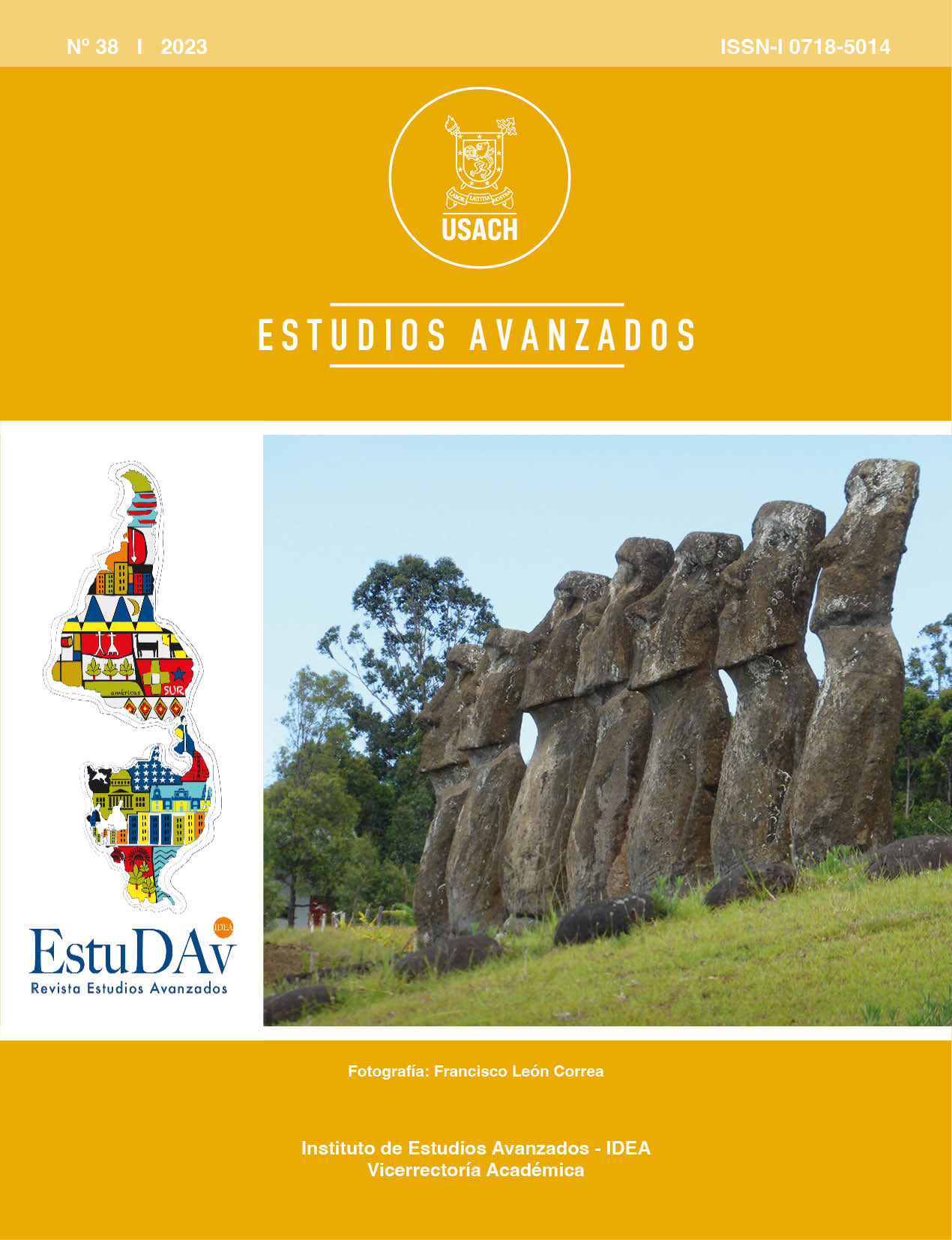TimeTravellerTM: Between Popular Culture and Posthumanism
DOI:
https://doi.org/10.35588/estudav.v0i38.5834Keywords:
Indigenous People, Popular Culture, Posthumanism, Digital Art, ColonialismAbstract
This article analyzes the work of the Canadian digital artist Skawennati Tricia Fragnito, specifically the work TimeTravellerTM, in light of the Gramsci’s theory of Popular Culture and the Posthumanism ideas of Francesca Ferrando. Since TimeTravellerTM makes visible key moments of the Mohawk nation and other indigenous peoples, the first part of the article briefly explains the history of the Mohawk people, in order to understand Skawennati’s aims. Then, the TimeTravellerTM series of videos is analyzed to define the role that, in Gramscian terms, an artist like Skawennati plays before her nation. The final part problematizes certain elements of TimeTravellerTM, which seem to contradict the postcolonial interpretations made of Skawennati’s work.
Downloads
References
Aloi, G. y McHugh, S. (2019). “Introduction”. En Aloi, G. y McHugh, S. (eds.). Posthumanism in Art and Science. A reader. Nueva York y Chichester, Columbia University Press.
Alfred, T. (2019). Peace, power, righteousness: an indigenous manifesto. Toronto, Oxford University Press Canada.
Austen, I. (2021). “’Horrible History’: Mass Grave of Indigenous Children Reported in Canada”. The New York Times, 28 de mayo 2021. “https://www.nytimes.com/2021/05/28/world/canada/kamloops-mass-grave-residential-schools.html
De Bruin, T. (2021). “Oka Crisis”. The Canadian Encyclopedia. https://www.thecanadianencyclopedia.ca/en/article/oka-crisis (consultado 30/06/2023).
Dwyer, H. y Adare, S. (2012). Mohawk History and Culture. Nueva York, Gareth Stevens.
Ferrando, F. (2019). Philosophical Posthumanism. Londres y Nueva York, Bloomsbury.
Ferro, M. (dir.). (2005). El libro negro del colonialismo. Siglos XVI al XXI: del exterminio al arrepentimiento. Madrid, La Esfera de los Libros.
Forgacs, D. (2000). “Popular Culture”. En Gramsci, A. The Gramsci Reader. Selected Writings, 1916-1935. Ed. D. Forgacs. Nueva York, New York University Press.
Ge, A. (2021). “Asserting Aboriginal Territories in Cyberspace: Interview with the Artist Skawennati (2019)”. En Aloi G. y McHugh S. (eds.). Posthumanism in Art and Science. A Reader. Nueva York y Chichester, Columbia University Press.
Gramsci, A. (2000). The Gramsci Reader. Selected Writings, 1916-1935. Ed. David Forgacs. Nueva York, New York University Press.
Lévy, P. (1998). Becoming Virtual: Reality in the Digital Age. Nueva York, Plenum Trade.
Proulx, M. (2015). “CyberPowWow: Digital Natives and the First Wave of Online Publication” / “CyberPowWow: les Autochtones à l’ère numérique et la première vague de publications en ligne”. Journal of Canadian Art History / Annales d’histoire de l’art Canadien 36(1): 203-216.
Pullen, T.M. (2016). “Skawennati’s-TimetravellerTM: Deconstructing the Colonial Matrix in Virtual Reality”. AlterNative: An International Journal of Indigenous Peoples 12(3): 236-249. DOI https://doi.org/10.20507/AlterNative.2016.12.3.3
Reid G.F. (2004). Kahnawà:ke: Factionalism Traditionalism and Nationalism in a Mohawk Community. Lincoln y Londres, University of Nebraska Press.
Skawennati (2023). “Bio”. Skawennati. https://www.skawennati.com/bio/bio.html (consultado 30/06/2023).
Worcester, D.E. (2019). Los apaches. Águilas del sudoeste. Barcelona, Península.
Downloads
Submitted
2022-11-10Published
Issue
Section
License
Copyright (c) 2023 Mario Iván Uraga Ramírez

This work is licensed under a Creative Commons Attribution 4.0 International License.










